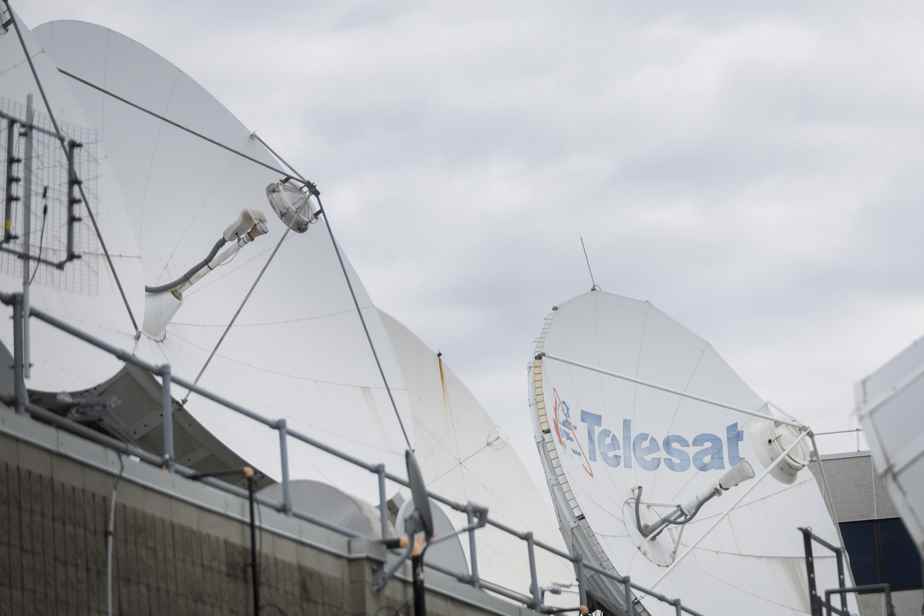Another tile is falling on the promoter of a constellation of telecommunications satellites which promises significant spinoffs in Quebec. Telesat must find several hundred million dollars more to put its project into orbit, once again increasing the degree of uncertainty.
Posted at 7:00 a.m.
Even though the Ontario company has seen Quebec and Ottawa promise it $2 billion in public funds—sums that have not yet been paid—it lacked $2.5 billion to materialize the ambitions of the Lightspeed constellation, which had already been downgraded.
The company did not want to specify to The Press the means it intended to take to overcome these financial contingencies.
“Lightspeed represents an attractive investment opportunity, but there is no guarantee that these discussions will have a positive outcome,” Telesat President and CEO Daniel Goldberg told investors. last week.
Telesat wants to put satellites in low orbit — more than 1,000 km above the Earth — to, among other things, provide high-speed Internet access in remote areas.
Due to the explosion of costs resulting from inflation, the constellation of 298 satellites will eventually be reduced to 188 units. These satellites are to be built by Thales Alenia Space.
This slimming diet is not enough. Additional funds will be needed to finance this constellation, the bill of which was initially estimated at 6.5 billion. Mr. Goldberg did not quantify the extent of the cost overruns. He had limited himself to saying that they were less than 10% of Lightspeed’s initial invoice.
“The original plan did not materialize,” said Caleb Henry, principal analyst at the American firm Quilty Analytics, which specializes in aerospace, in a telephone interview.

PHOTO FROM QUILTY ANALYTICS WEBSITE
Caleb Henry, Principal Analyst at Quilty Analytics
The longer Telesat takes to progress, the more time its competitors have to build and launch their own satellites. This is why it is likely to become more and more difficult.
Caleb Henry, Principal Analyst at Quilty Analytics
These strong rivals are players like SpaceX (Elon Musk) and Amazon, who caress big ambitions, like other European promoters.
Important support
In February 2021, the Legault government had promised 400 million to Telesat in exchange for the creation of around 300 jobs in the Gatineau region, where the company promises to build half a dozen facilities. A few months later, Ottawa had granted 1.5 billion. Together, the two levels of government agreed to fund approximately 30% of the constellation’s initial bill.
Telesat wanted to obtain the missing 2.5 billion from agencies such as Export Development Canada (EDC) and Bpifrance, but this has still not materialized. Bpifrance risks being a shareholder in OneWeb, a rival constellation of Lightspeed, in the wake of its merger with Eutelsat. The French agency is Eutelsat’s main shareholder. Mr. Henry wonders if this could cool the French agency with regard to Telesat’s ambitions.
The American analyst also wonders where the Canadian company will collect the missing funds.
“SpaceX has the ability to convince the markets, Amazon is backed by Jeff Bezos, and OneWeb has a diverse shareholder base,” Henry said. I have yet to see Telesat do the same. »
Questions
According to our information, Telesat has not yet returned to knock on the door of the Legault and Trudeau governments. Last winter, the Minister of Economy and Innovation, Pierre Fitzgibbon, hinted that Quebec had contributed enough to this project – still considered important by both levels of government.
A Telesat subcontractor, the Ontarian MDA, which operates a factory in Sainte-Anne-de-Bellevue, is responsible for manufacturing the active antennas for the satellites. It was to expand its facilities and hire 280 people thanks to a loan of 50 million. The company would not comment on the turn of events at Telesat.
Learn more
-
- 2024
- Year in which Telesat wishes to deploy its first low-orbit satellites

